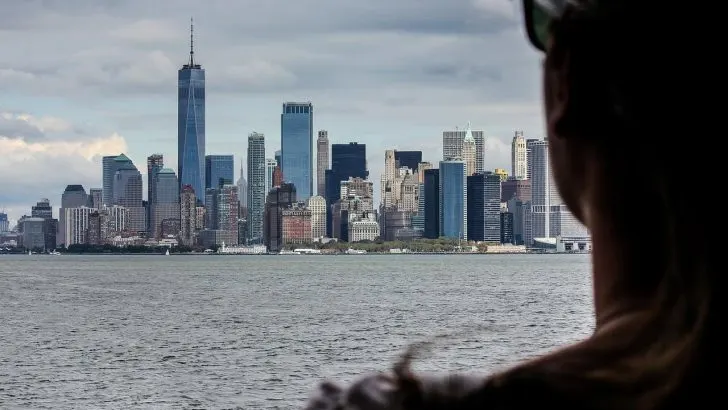What surprises international visitors most about traveling in the United States? How can newcomers avoid common pitfalls and fully enjoy their stay? From tipping culture to transport and connectivity needs, certain details make a big difference. Many wish they had known these before packing their bags and boarding a flight.
Small changes in expectations and planning go a long way toward smoother experiences. One essential tool for a hassle-free visit is an eSIM for USA, which can help traverse this beautiful nation. Let’s explore the key insights that international travelers often wish they’d known beforehand.
Understand Tipping Etiquette Early
Tipping in restaurants, taxis, and bars is considered standard practice. Many service workers in the USA depend on tips as a major part of their income. Not offering one may be viewed as rude or inconsiderate.
A 15–20 percent tip is expected in dining settings, often calculated before tax. In bars, a dollar per drink or more is typical. Understanding these norms helps avoid awkward moments during payments.
Know How Transportation Zones Work
Public transit systems in many cities often use zone-based or time-based fare structures. A single ticket typically covers travel within a specific area or timeframe. Going beyond that range may require an upgraded fare or an additional ticket.
Mobile apps or station kiosks can help calculate the correct fare in advance. These tools reduce confusion and make commuting more efficient. Understanding the system helps avoid unexpected fines or delays in the USA.
Cash Is Still Widely Used
Debit and credit cards are widely accepted, especially in larger stores and urban areas. However, many small businesses still prefer cash for convenience. This includes farmers’ markets, local cafés, and roadside vendors.
Carrying smaller bills can make purchases easier and avoid the need for change. It also speeds up interactions in busy settings. Having some cash on hand enhances day-to-day experiences while exploring.
Also Check: Scuba Diving in Santa Rosa Blue Hole
Plan Comfortable Walkable Routes
Urban areas vary widely in walkability and layout. Some neighborhoods are built for exploring on foot, offering easy access to cafés, shops, and galleries. Others are spread out and depend heavily on cars or public transport.
Checking local walk scores or map distances can help visitors plan more efficiently. Understanding how the city flows can save both time and energy. Comfortable shoes become essential within the first few days of exploration.
Pack for Varied Weather
The climate shifts dramatically from coast to coast. Winters can be snowy in the north with freezing temperatures. Meanwhile, southern regions often remain warm and humid even in colder months. These regional contrasts can catch travelers off guard if they pack based on just one destination.
Layering becomes essential for comfort and adaptability. Outerwear choices may need to change between stops. Planning helps prevent discomfort and unexpected wardrobe challenges. Packing a mix of lightweight and insulating pieces ensures you’re ready for sudden shifts in temperature.
Learn About Regional Sales Tax
Prices on shelves often appear lower than the final amount paid. This is because most retail locations in the USA do not include sales tax in the listed price. The tax is added during checkout. This can be surprising for visitors from countries where tax is already included in the displayed price.
The rate of sales tax differs between states and sometimes between cities. It may increase total costs by 5–10 percent or more. When comparing online prices, travelers should account for these variations.
Use Multi-Attraction and Transport Passes
City exploration passes that combine public transit and major attractions offer convenience and savings. These bundles reduce the need for separate tickets. Skip-the-line access often comes included, helping visitors avoid long waits.
Such passes typically cover a wide area, making them ideal for flexible itineraries. Travelers should review what is included to ensure value. Doing the math beforehand helps avoid overspending or unused features.
Expect Wait Times Without Reservations
Even popular diners may schedule waits without prior booking. Calling in advance or using online tools helps secure a table. In busy tourist areas, walk-ins can face wait times of 30 minutes or more. This step can save time and frustration.
Reservations also help manage expectations during busy periods. Peak dining hours often mean extended wait times. Planning in advance can ensure meals remain enjoyable rather than rushed.
Be Prepared for Standardized IDs
Security checks are common in many public venues. Some locations may require guests to show a government-issued photo ID. Having identification ready speeds up the process. This is especially important at concerts, sporting events, or age-restricted venues like bars and clubs.
Learning which cards or documents are accepted ahead of time helps avoid confusion. This allows for smoother entries at events or attractions. A little preparation goes a long way in ensuring you’re not delayed at important moments during your trip.
Conclusion
International visitors often arrive expecting the unexpected. Simple customs like tipping, transit zones, or walkability can shape perceptions. Using an eSIM for USA helps navigate these factors by ensuring reliable communication and mobility support. Travelers who embrace regional nuances find themselves more engaged and at ease. Instead of reacting to surprises, they thrive on local rhythms and convenience.

